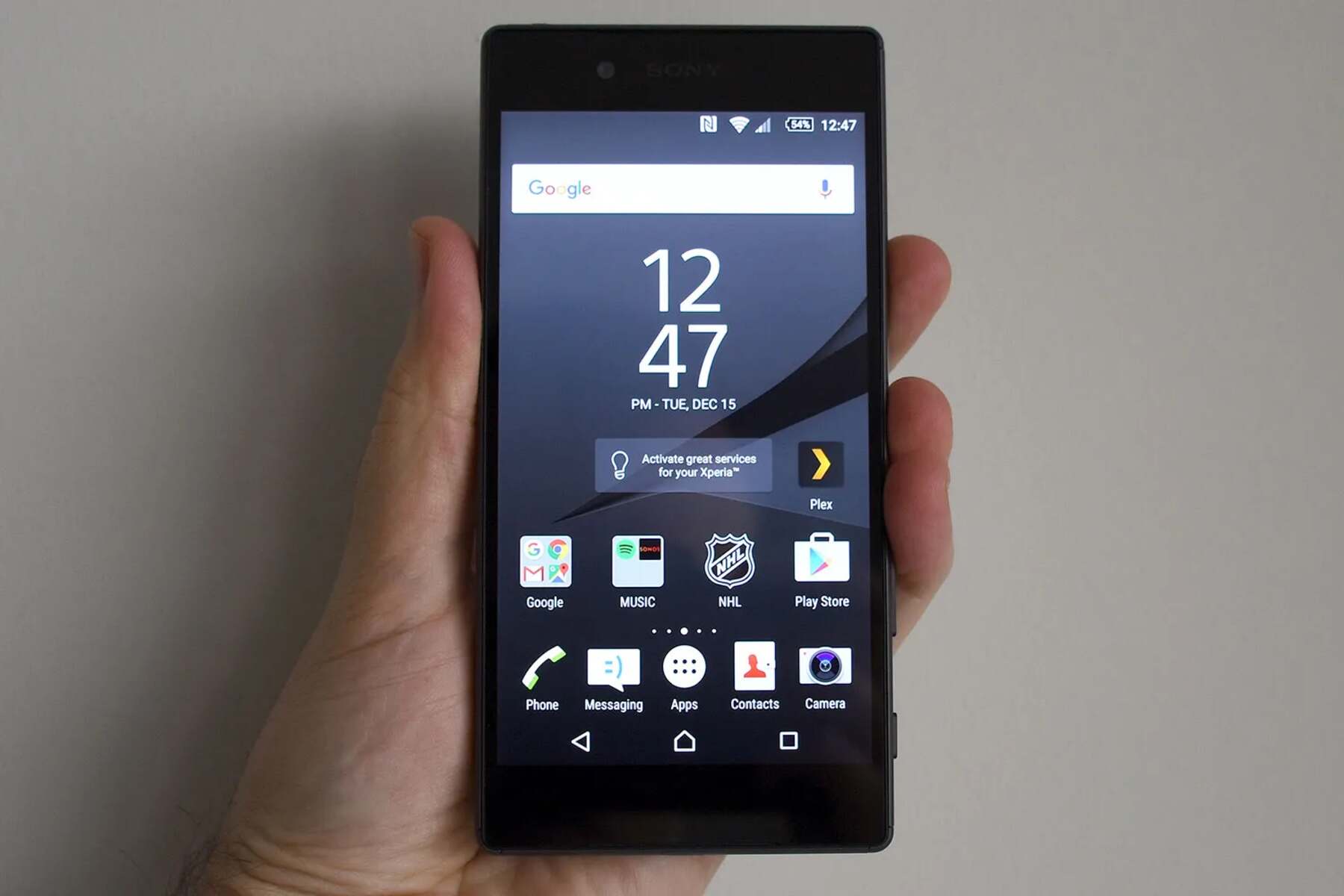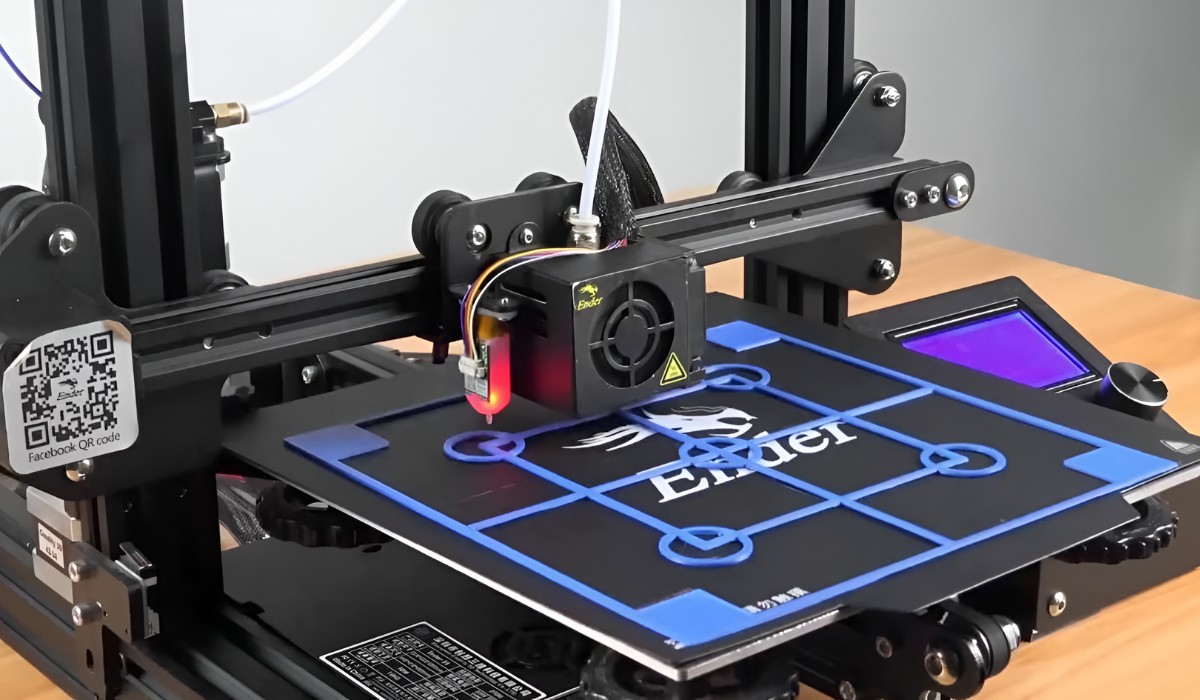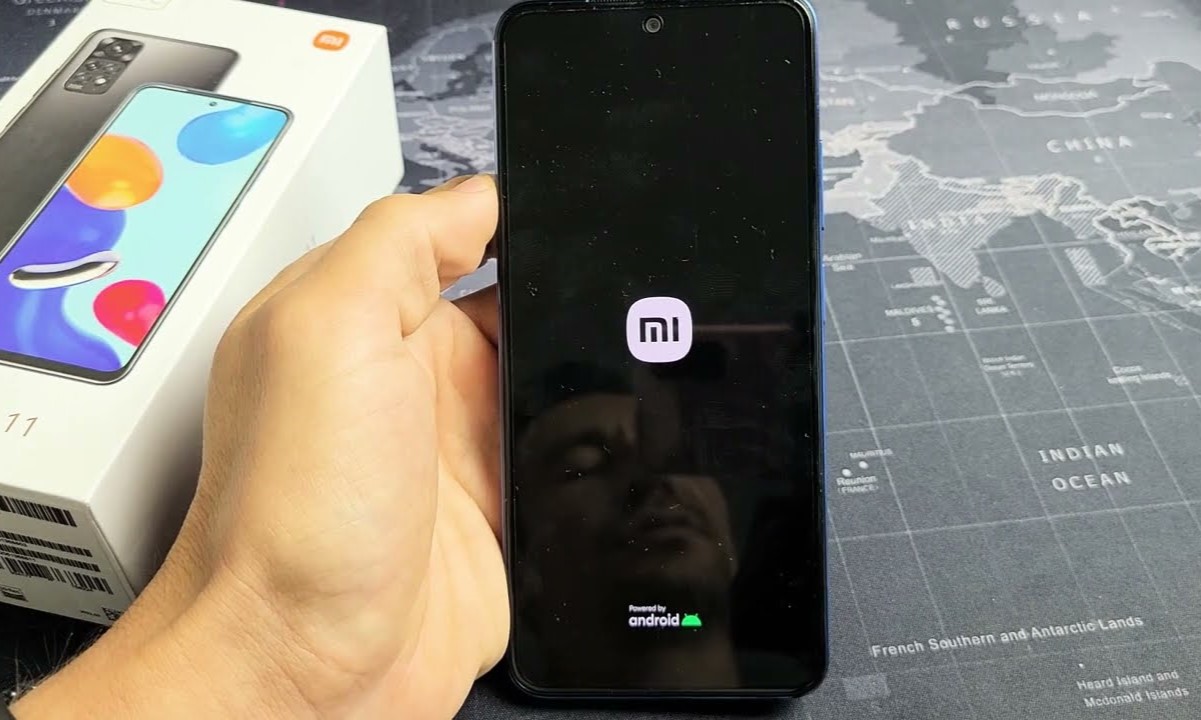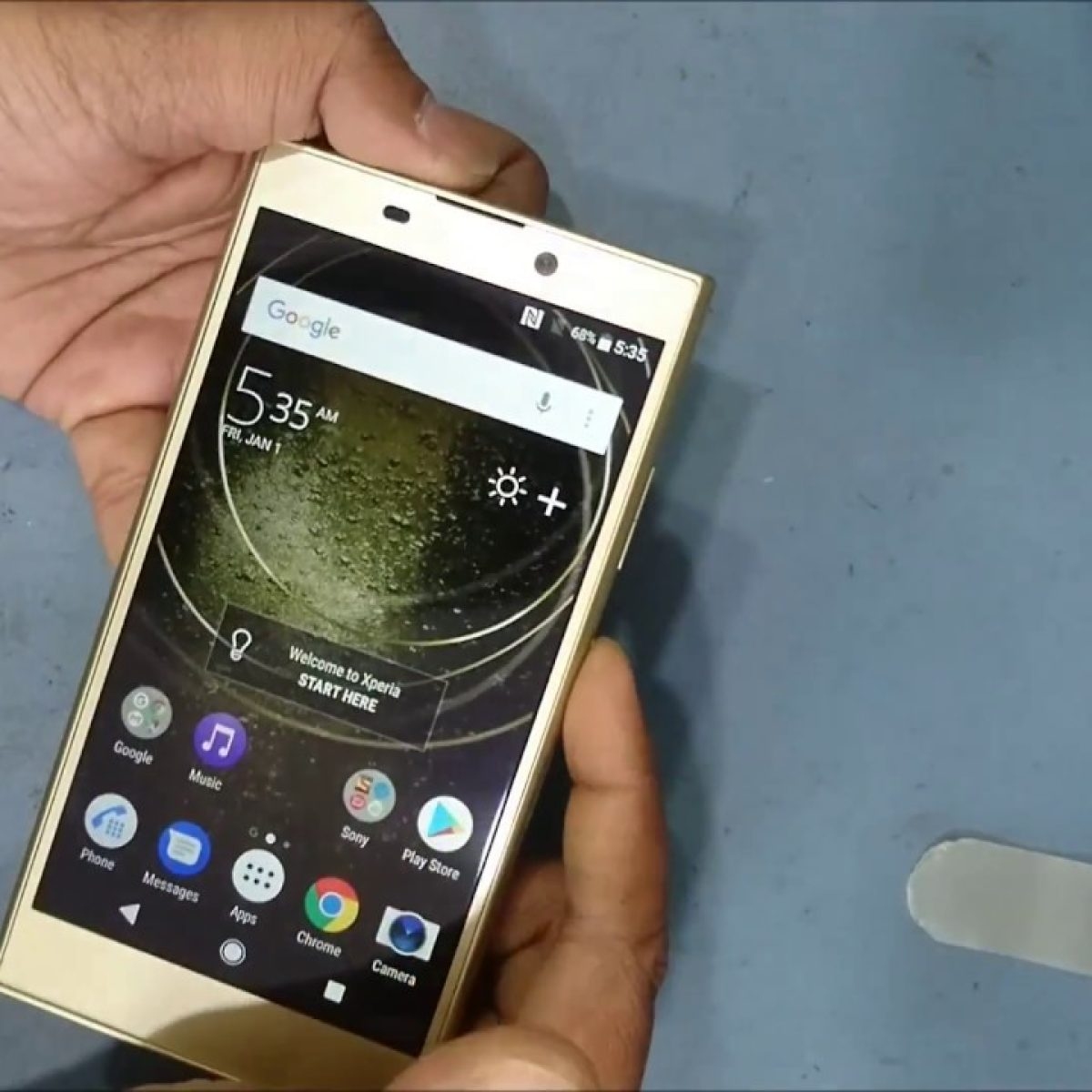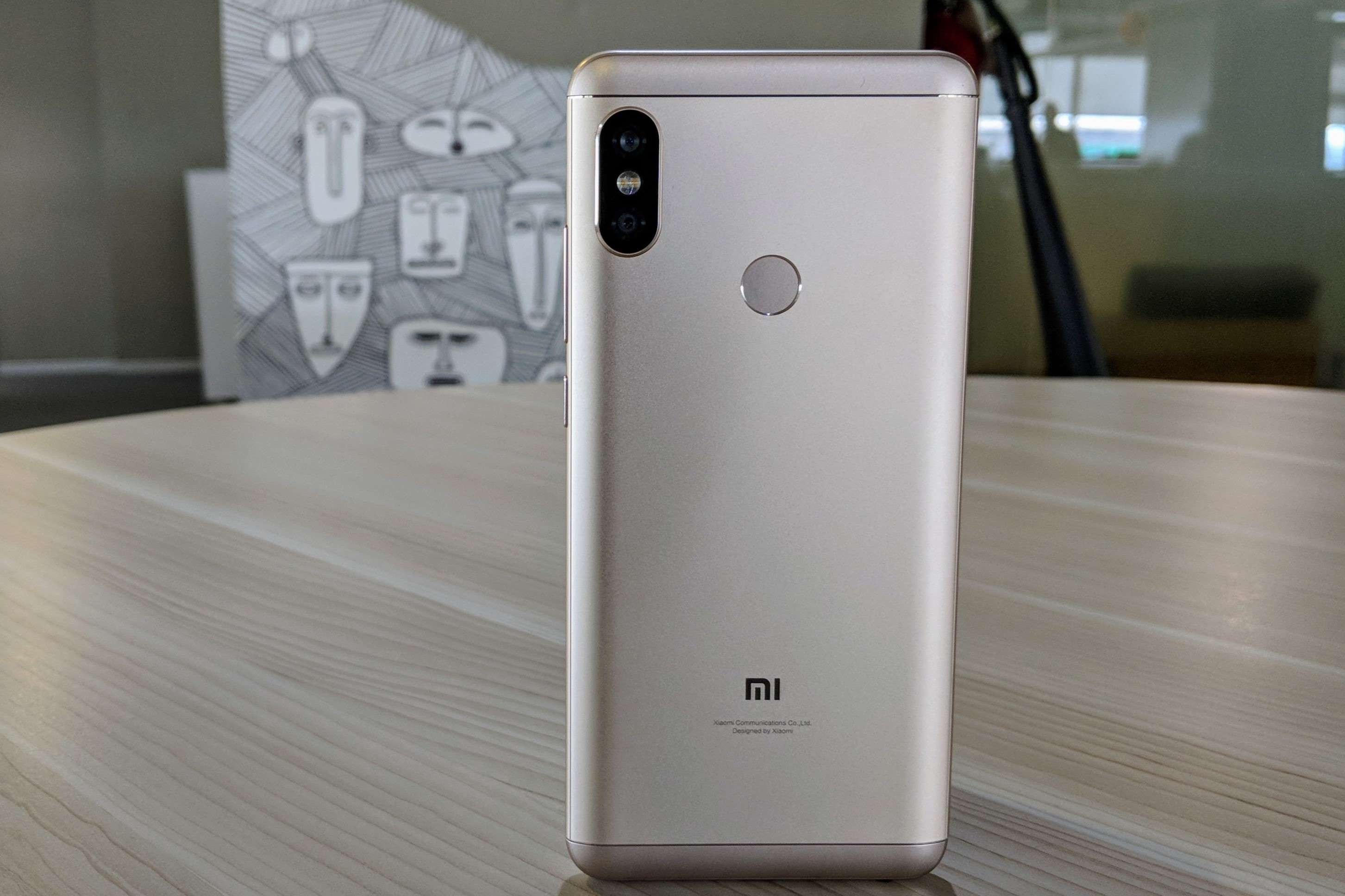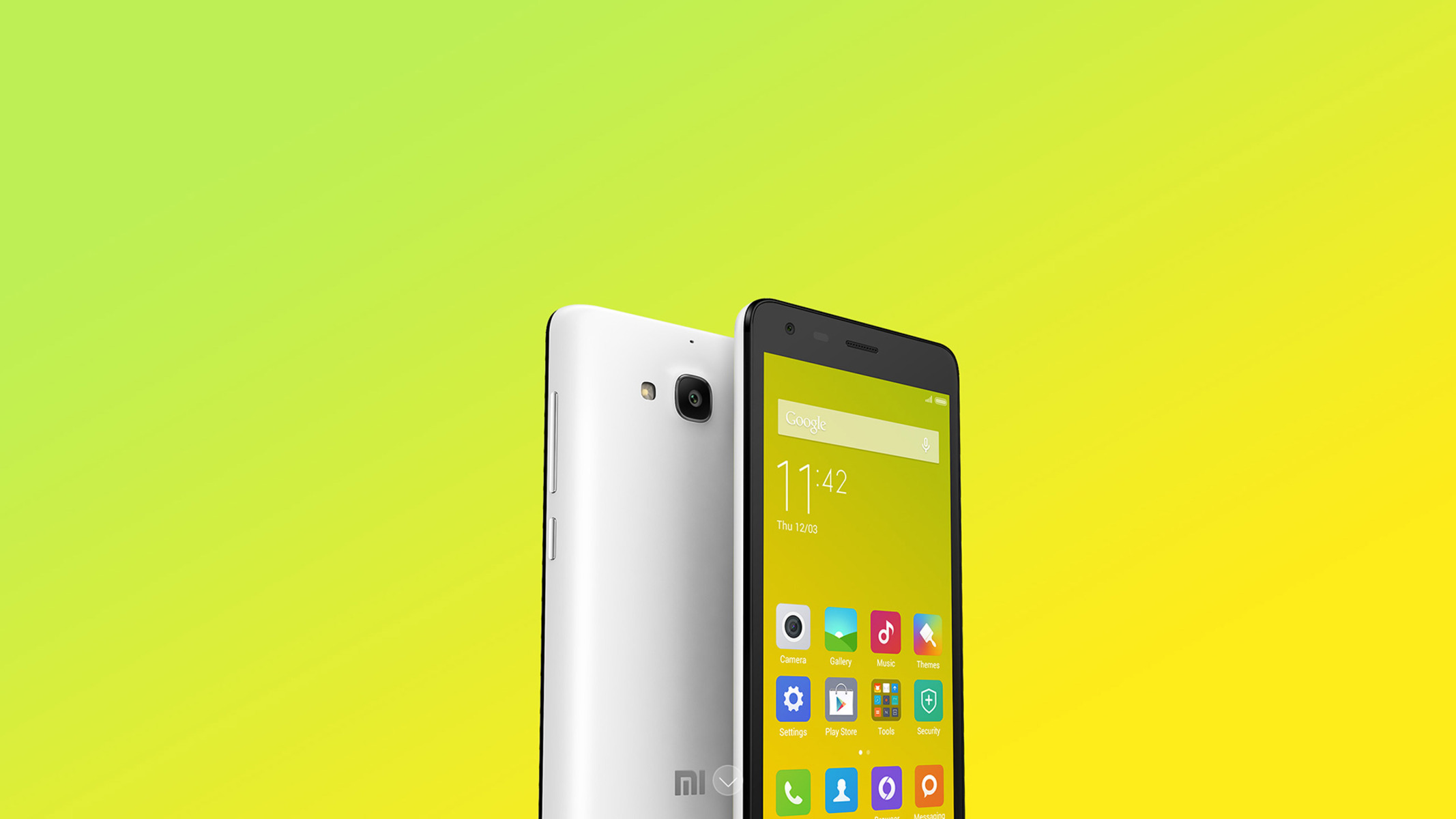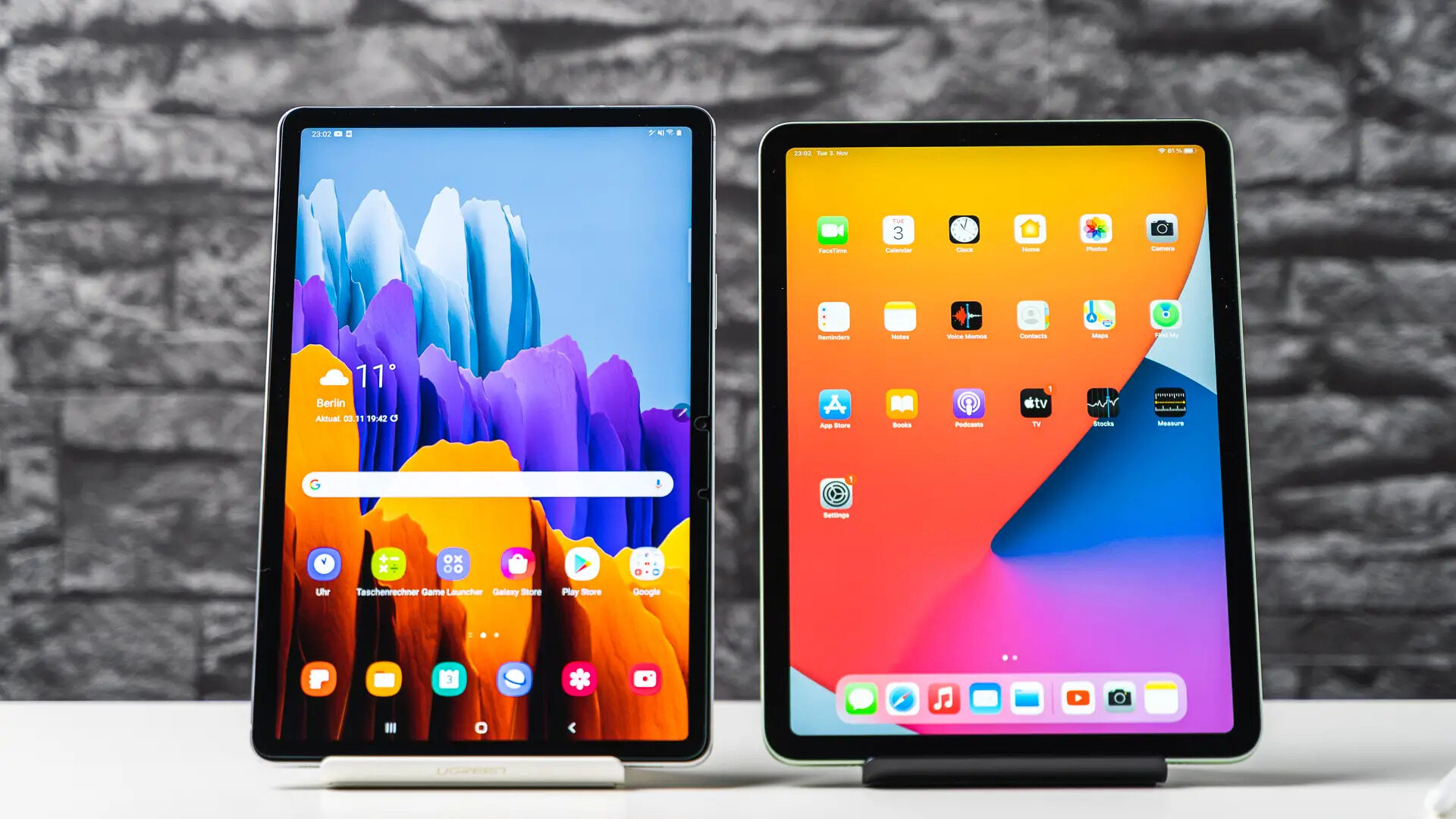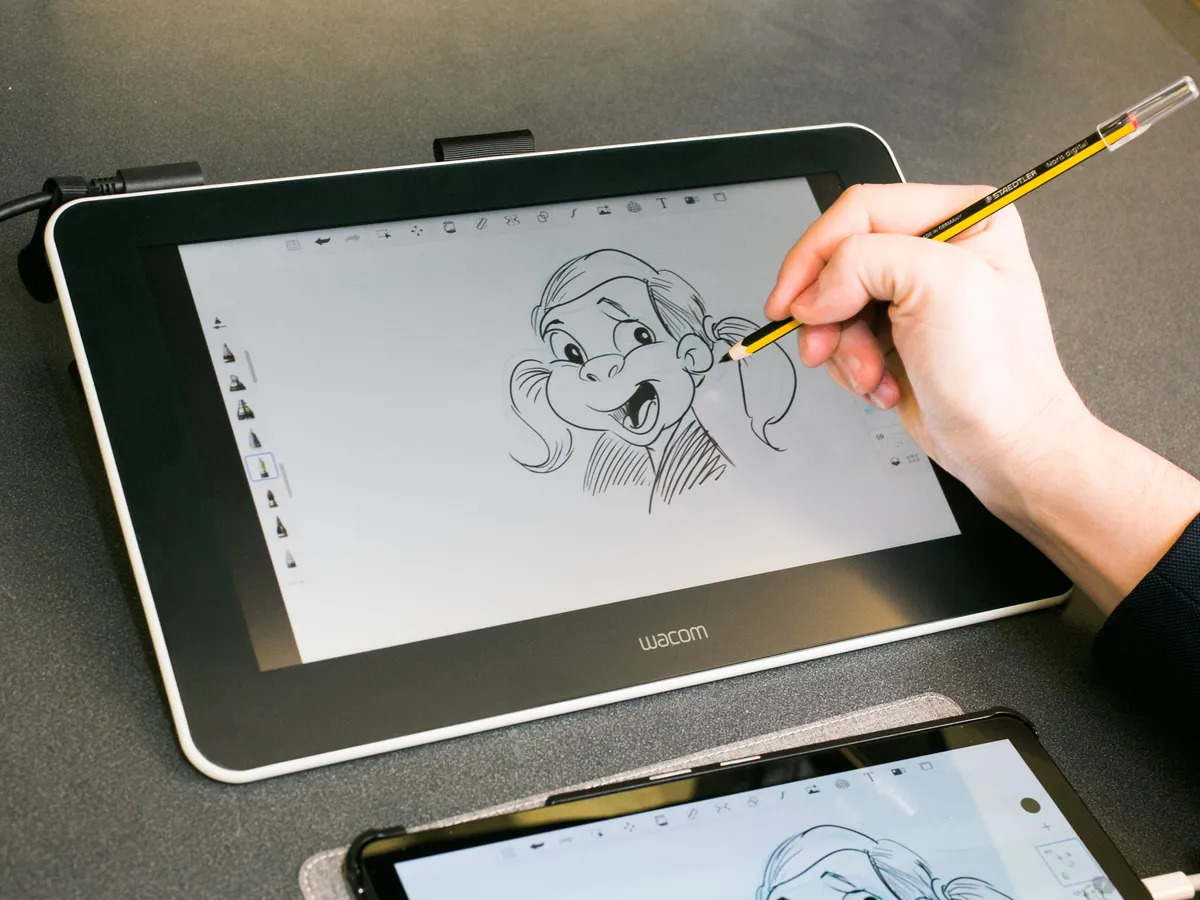Introduction
Welcome to this guide on how to reflash your Android tablet. Reflashing, also known as flashing or reinstalling the firmware, is a process that allows you to update or restore your tablet’s operating system to its original state. This can be necessary if your tablet is experiencing software issues, performance problems, or if you simply want to update to the latest version of Android.
Reflashing your Android tablet requires some technical knowledge and caution, but it can be a highly effective way to resolve software-related issues and improve the performance of your device. Throughout this guide, we will walk you through the step-by-step process of reflashing your Android tablet, ensuring that you have the necessary tools, drivers, and files to successfully complete the procedure.
It is important to note that reflashing your Android tablet will erase all the data on your device, so it is crucial to back up any important files or documents before proceeding with the process. Additionally, different tablets may have varying procedures and tools required for reflashing, so it is essential to carefully follow the instructions specific to your device.
By following the steps outlined in this guide, you will gain the knowledge and confidence to reflash your Android tablet and restore it to optimal performance. So, let’s get started and learn how to reflash your Android tablet!
Understanding the Reflashing Process
Before diving into the steps of reflashing your Android tablet, it is important to understand the process and its implications. Reflashing involves replacing the existing firmware on your tablet with a new version, either the same version or an updated one. This process can help resolve system issues, improve performance, and provide access to new features and security updates.
It’s worth noting that reflashing your Android tablet is different from a factory reset. While a factory reset restores your tablet to its original state, reflashing goes a step further by replacing the entire operating system. By doing this, you essentially have a clean slate to work with and can eliminate any software-related issues that may have been affecting your tablet’s performance.
Reflashing should be approached with caution as it carries some risks. If not done correctly or if the wrong firmware is used, it can lead to a bricked device, rendering it inoperable. To mitigate these risks, it’s essential to follow the specific instructions for your tablet model and make sure to have the proper firmware and tools.
Some common reasons for reflashing your Android tablet include:
- Software Issues: If your tablet is experiencing frequent crashes, freezes, or unusual behavior, reflashing can help resolve these problems by reinstalling a fresh copy of the operating system.
- Performance Improvement: Over time, your tablet may become slower due to accumulated data, unnecessary files, or outdated software. Reflashing can help optimize your tablet’s performance by starting afresh with a clean installation.
- System Updates: If your tablet is running on an older version of Android, reflashing allows you to update to the latest version, gaining access to new features, improved security, and bug fixes.
Now that you have a better understanding of the reflashing process and its benefits, let’s move on to the next section, where we will cover the steps to back up your data before proceeding with the reflashing procedure.
Backup Your Data
Before embarking on the process of reflashing your Android tablet, it is crucial to back up any important data or files. Reflashing involves wiping the existing operating system, which means that all data on your tablet will be erased. By taking the time to back up your data, you can prevent the loss of important documents, photos, videos, and other files.
There are several options available for backing up your data on an Android tablet:
- Cloud Storage: One of the easiest and most convenient methods of backing up your data is by using cloud storage services such as Google Drive, Dropbox, or OneDrive. These services allow you to upload your files to the cloud, where they can be accessed from any device with an internet connection.
- External Storage: If your tablet has expandable storage via a microSD card, you can transfer your important files to the card before reflashing. This way, you can remove the microSD card and keep your data safe during the process.
- Computer Backup: Another option is to connect your tablet to a computer using a USB cable and manually copy your files to a designated folder on your computer. This method provides a direct and secure way to back up your data.
It is important to note that different tablets may have varying options for backing up data. You can refer to the user manual or the manufacturer’s website for specific instructions on how to back up your data for your particular tablet model.
When backing up your data, it is recommended to include the following:
- Contacts
- Photos and Videos
- Documents
- Music and other media files
- App data and settings (if possible)
Ensure that you have a complete backup of your important data before proceeding to the next steps. This way, even if something goes wrong during the reflashing process, you can restore your data and minimize any potential loss.
Now that you have backed up your data, you are ready to move on to the next section, where we will guide you on downloading the necessary files and tools for the reflashing process.
Download Necessary Files and Tools
Before proceeding with the reflashing process, you need to ensure that you have the necessary files and tools downloaded on your computer. These files and tools will be required to install the new firmware on your Android tablet. Here are the essential components you’ll need:
- Firmware: Start by locating the appropriate firmware for your specific tablet model. You can typically find the firmware on the manufacturer’s website or other reliable sources. Ensure that you download the correct firmware version to avoid any compatibility issues.
- Reflashing Tool: Depending on your tablet model, you may need to download a specific reflashing tool. This tool is necessary to install the firmware on your tablet. Popular reflashing tools include Odin for Samsung devices, SP Flash Tool for MediaTek devices, and fastboot for Google Nexus and Pixel devices.
- USB Driver: To connect your tablet to the computer and enable communication during the reflashing process, you will need to download and install the USB driver specific to your tablet model. The USB driver allows your computer to recognize and interact with your tablet when connected via USB.
When downloading these files, it is crucial to ensure that you obtain them from reliable sources to avoid any malware or other security risks. Stick to official websites, recognized forums, or trusted third-party sources, as they are more likely to provide authentic and safe files.
Take note of where you save these files on your computer, as you will need to locate them later during the reflashing process.
It is important to mention that the exact names and locations of these files may vary depending on the tablet model and the reflashing tool you are using. Refer to the instructions provided by the tablet manufacturer or the relevant reflashing tool documentation to ensure you have the correct files specific to your device.
Now that you have the necessary files and tools downloaded on your computer, you are ready to proceed to the next steps. In the following sections, we will guide you through the process of enabling developer options and USB debugging mode on your Android tablet.
Enable Developer Options on Your Android Tablet
Before you can begin the reflashing process, you need to enable Developer Options on your Android tablet. Developer Options provide advanced settings and options that are intended for developers, but they are also essential for performing certain tasks such as enabling USB debugging mode.
Here’s how you can enable Developer Options on your Android tablet:
- Go to the Settings app on your tablet. You can usually find it in the app drawer or by swiping down from the top of the screen and tapping on the gear icon.
- Scroll down and tap on “About tablet” or “About phone”
- Locate the “Build number” or “Software information” section. The exact location and name may vary depending on your tablet model.
- Tap on the “Build number” or “Software information” several times, usually around 7 or 8 times, until you see a notification that says “You are now a developer!” or something similar.
- Go back to the main Settings screen, and you should now see “Developer options” listed.
Once you have enabled Developer Options, you will have access to various advanced settings that are typically hidden from regular users. These settings include USB debugging mode, which is necessary for interacting with your tablet while connected to a computer for the reflashing process.
Keep in mind that enabling Developer Options may void your device’s warranty, and tinkering with advanced settings without proper knowledge can lead to unintended consequences. Be sure to follow the instructions carefully and only make changes if you understand the implications.
In the next section, we will guide you through enabling USB debugging mode, which is a crucial step for connecting your tablet to the computer during the reflashing process.
Enable USB Debugging Mode
In order to establish a connection between your Android tablet and your computer during the reflashing process, you need to enable USB debugging mode. USB debugging allows your computer to communicate with your tablet and perform advanced functions. Here’s how you can enable USB debugging mode:
- Open the Settings app on your tablet.
- Scroll down and tap on “Developer options.”
- Look for the “USB debugging” option and toggle the switch to enable it.
- If prompted, confirm your action by tapping on “OK” or “Allow Debugging”.
Once USB debugging mode is enabled, your Android tablet is now ready to establish a connection with your computer.
Keep in mind that enabling USB debugging mode is an essential step for the reflashing process, and it allows your computer to have full control over your tablet’s software. Therefore, exercise caution and only enable USB debugging mode when needed.
It’s worth noting that the exact steps for enabling USB debugging mode may vary depending on your tablet model and the version of Android you are using. In some cases, you may need to go to “Developer options” and enable additional settings such as “USB debugging (Security settings)” or similar options.
Now that you have enabled USB debugging mode, the next step is to ensure that your computer has the necessary drivers installed for your Android tablet. We will cover this in the following section.
Install Drivers for Your Android Tablet
In order to establish a successful connection between your Android tablet and your computer during the reflashing process, you need to ensure that the appropriate drivers are installed on your computer. These drivers allow your computer to recognize and communicate with your tablet effectively. Here’s how you can install drivers for your Android tablet:
- Start by connecting your tablet to your computer using a USB cable.
- Windows: In most cases, Windows will automatically attempt to install the necessary drivers when you connect your tablet. You may see a notification or a wizard guiding you through the driver installation process. Follow the on-screen instructions and let Windows complete the installation.
- MacOS: Mac computers usually have the necessary drivers pre-installed, so no manual installation is required. Your tablet should be recognized and ready to use after connecting it to the computer.
- If Windows does not automatically install the drivers or if you encounter any issues, you can manually install the drivers by following these steps:
- Visit the website of the tablet manufacturer or the support page specifically for your tablet model.
- Look for the “Downloads” or “Support” section, where you can find the drivers for your tablet.
- Download the appropriate drivers for your tablet model and operating system.
- Once downloaded, run the driver installer and follow the on-screen instructions to complete the installation process.
- After the drivers are installed, restart your computer.
After following these steps, your computer should recognize your Android tablet when connected via USB. To confirm whether the drivers are installed correctly, you can check the Device Manager on Windows or the System Information on MacOS to see if your tablet is listed without any warning or error messages.
Having the proper drivers installed ensures a smooth and stable connection between your tablet and computer during the reflashing process, enabling a successful firmware installation.
Now that you have the necessary drivers installed, you are ready to proceed to the next section, where we will guide you through connecting your Android tablet to your computer in preparation for reflashing.
Connect Your Android Tablet to Your Computer
Now that you have enabled USB debugging mode and installed the necessary drivers on your computer, you are ready to connect your Android tablet to your computer. Establishing this connection is crucial for the reflashing process. Follow these steps to connect your tablet:
- Turn on your computer and ensure that it is booted up and ready for use.
- Connect one end of the USB cable to your tablet’s USB port.
- Connect the other end of the USB cable to an available USB port on your computer.
- On your tablet, you may be prompted to select the type of USB connection. Choose the option that enables file transfer, media sync, or MTP (Media Transfer Protocol) mode.
- Once connected, you should see a notification on your Android tablet indicating that it has been connected as a media device or in USB debugging mode.
At this point, your Android tablet should be recognized by your computer. To confirm the connection, you can check the File Explorer or Finder on your computer. Your tablet’s storage should be accessible just like any other external device.
If you encounter any issues with the connection, ensure that the USB cable is securely plugged in on both ends, and try using a different USB port on your computer. Additionally, double-check that USB debugging mode is enabled on your tablet and that the necessary drivers are installed on your computer.
Once the connection is established, you are now ready to proceed to the next step, which involves launching the reflashing tool on your computer. We will guide you through this process in the following section.
Launch the Reflashing Tool
With your Android tablet connected to your computer, it’s time to launch the reflashing tool that will facilitate the installation of the new firmware. The reflashing tool is specific to your tablet model and is essential for the successful completion of the process. Follow these steps to launch the reflashing tool:
- Ensure that the necessary files and tools, including the reflashing tool, are already downloaded and saved on your computer.
- Locate the folder where you saved the reflashing tool file.
- Double-click on the reflashing tool file to launch it. This may vary depending on the tool you are using.
- You may be prompted to grant administrative access. If so, click on “Yes” or “Allow” to proceed.
- Once the reflashing tool is launched, you should see a user interface or a command line interface, depending on the tool you are using. Familiarize yourself with the tool’s interface and options.
It’s important to note that different reflashing tools have different interfaces and features. Some tools may have a graphical user interface (GUI), while others may require executing commands in a command prompt or terminal. Refer to the documentation or user guide of your specific tool for detailed instructions on how to use it.
Launching the reflashing tool establishes the connection between your computer and your tablet, allowing the tool to communicate with your device. With the tool up and running, you are now ready to proceed with the next step, which involves locating the firmware file that you downloaded earlier.
In the upcoming section, we will guide you on how to find and select the firmware file for the reflashing process. Stay tuned!
Locate the Firmware File
Now that the reflashing tool is launched, the next step is to locate and select the firmware file that you downloaded earlier. This firmware file contains the updated or original operating system that you will be installing on your Android tablet. Follow these steps to locate the firmware file:
- Open the file explorer or file manager on your computer.
- Navigate to the folder where you saved the firmware file. It is usually in your downloads folder or the folder you specified when downloading.
- Look for the firmware file, which may have a .zip or .img extension. The file name may vary depending on the tablet model and the firmware version.
- Once you’ve located the firmware file, note its location or keep the file explorer window open.
Ensure that you have the correct firmware file for your tablet model and that it is compatible with the reflashing tool you are using. Using an incorrect firmware file can lead to issues or bricking your tablet.
If you cannot find the firmware file or you suspect that it is corrupt or incompatible, consider re-downloading it from a reliable source or contacting the tablet manufacturer or support for assistance.
With the firmware file located, you are now ready to proceed with the reflashing process. In the following section, we will guide you through the steps to begin the reflashing process on your Android tablet.
Begin the Reflashing Process
With the firmware file located and the reflashing tool launched, it’s time to begin the reflashing process on your Android tablet. This process will replace the existing firmware with the new one, providing an updated or fresh version of the operating system. Follow these steps to begin the reflashing process:
- Ensure that your Android tablet is still connected to your computer via the USB cable.
- On the reflashing tool interface, look for an option or button that allows you to start the flashing or installation process.
- If the reflashing tool has a graphical user interface (GUI), it may provide a browse or select option to locate the firmware file. Use this option to navigate to the location where you saved the firmware file and select it.
- If you’re using a command line interface, follow the specific instructions provided by the tool’s documentation to execute the necessary commands for initiating the reflashing process.
- Once the firmware file is selected or the necessary commands are executed, double-check all the settings and options to ensure they are correct.
- Finally, click on the “Start,” “Flash,” or “Reflash” button to begin the reflashing process.
During the reflashing process, it’s important to keep your tablet connected to your computer and avoid interrupting the process by disconnecting the USB cable or turning off your tablet. The process may take some time to complete, so be patient and allow it to run until it finishes.
It’s worth noting that some reflashing tools may provide additional options or settings that you can configure according to your preferences or specific requirements. We recommend referring to the documentation or the user guide provided by the tool for detailed information about these options.
As the reflashing process begins, you will see progress indicators or status messages updating you on the progress. Avoid using or interacting with your tablet during the process to prevent any disruptions.
In the next section, we will cover the step of waiting for the reflashing process to complete. This step is crucial to ensure a successful and error-free firmware installation. Stay tuned!
Wait for the Reflashing to Complete
After initiating the reflashing process on your Android tablet, it is important to exercise patience and allow the process to complete without interruption. The time required for the reflashing process can vary depending on various factors, including the size of the firmware file and the speed of your computer. During this time, it is crucial to wait and avoid any actions that may disrupt the process or cause complications. Here are some key points to keep in mind while waiting for the reflashing to complete:
- Stay connected: Keep your Android tablet connected to your computer via the USB cable throughout the entire process. Disconnecting the tablet prematurely can lead to incomplete or corrupted firmware installation.
- Avoid interruptions: Refrain from using your tablet or engaging in activities that may interfere with the reflashing process. This includes avoiding unwanted movements or accidental disconnections of the USB cable.
- Monitor progress: Keep an eye on the reflashing tool interface or console for any progress indicators or completion messages. This will help you track the status of the reflashing process.
- Exercise patience: The reflashing process may take some time to complete, so it’s important to be patient. Avoid prematurely assuming that something has gone wrong and give the process ample time to finish.
- Ensure a stable power source: Ensure that your tablet and your computer are connected to a stable power source to prevent any sudden power loss that could disrupt the reflashing process.
During the reflashing process, your tablet may restart multiple times or display various progress indicators. These are normal parts of the process and should not be a cause for concern. The reflashing tool will handle the installation of the new firmware and update the operating system on your tablet.
Once the reflashing process is completed, the reflashing tool will provide a confirmation message or indicate that the process was successful. At this point, you can proceed to disconnect your Android tablet from your computer and prepare for the final steps of restarting your device.
In the following section, we will guide you through the steps to safely disconnect your Android tablet from your computer. Stay tuned!
Disconnect Your Android Tablet from Your Computer
Once the reflashing process is complete and you have received confirmation from the reflashing tool, you can safely disconnect your Android tablet from your computer. Follow these steps to ensure a proper disconnection:
- Ensure that the reflashing tool displays a successful completion message or indicates that the process is finished.
- If you have any other programs or windows open on your computer that are accessing or interacting with your tablet, close them to prevent any conflicts or issues.
- Go to the system tray or taskbar on your computer and look for the USB device icon or an option that allows you to safely remove or eject the connected device.
- Click on the USB device icon or the eject option, and a notification or prompt will appear.
- On the notification or prompt, select your Android tablet or the specific USB connection and click on “Safely remove” or “Eject.”
- Wait for the system to finish the ejection process, and you will receive a confirmation message indicating that it is safe to disconnect your tablet.
- Once you receive the confirmation message, gently unplug the USB cable from your tablet and your computer.
By following these steps, you ensure that all data transfers or processes between your tablet and your computer are completed, and you can safely disconnect the USB cable without causing any damage or disruption.
Now, with your Android tablet successfully disconnected, you are ready to move on to the final steps of restarting your tablet and completing the reflashing process. We will guide you through these steps in the following section. Stay tuned!
Restart Your Android Tablet
After completing the reflashing process and safely disconnecting your Android tablet from your computer, the final step is to restart your device. Restarting your tablet ensures that the new firmware is fully applied and allows your tablet to boot up with the updated or restored operating system. Here’s how you can restart your Android tablet:
- Ensure that your tablet is disconnected from your computer and is not connected to any charging cables.
- Locate the power button on your tablet. Depending on your tablet model, the power button may be located on the side, top, or front of the device.
- Press and hold the power button until a menu or options appear on your tablet’s screen.
- Look for the “Restart” option in the menu and tap on it. If the restart option is not available, you can select “Power off” and wait for a few seconds before pressing the power button again to turn it back on.
- Allow your tablet to power down completely, and then press the power button again to turn it back on.
During the restart process, your tablet may display the manufacturer’s logo or a loading screen. This is normal and indicates that your tablet is booting up with the new firmware. It may take a few minutes for the booting process to complete, so be patient.
Once your tablet has successfully restarted, you will be greeted with the updated or restored operating system. Take a moment to explore the interface and ensure that everything is functioning as expected. If you encounter any issues or abnormalities, such as app crashes or missing data, you may need to perform further troubleshooting or consult the tablet manufacturer’s support resources.
Congratulations! You have successfully reflashed your Android tablet and now have an updated or restored operating system. Enjoy the improved performance, new features, and stability that the new firmware brings.
If you ever need to reflash your tablet in the future or encounter any software-related issues, you can refer back to this guide to help you through the process.
Thank you for following this guide on how to reflash your Android tablet. If you have any further questions or need assistance, feel free to seek help from the tablet manufacturer’s support or consult relevant online communities and forums.
Conclusion
Congratulations on successfully completing the process of reflashing your Android tablet! In this guide, we have covered the necessary steps to ensure a smooth and successful reflashing process, from understanding the process to backing up your data, downloading necessary files and tools, enabling developer options and USB debugging mode, installing drivers, connecting your tablet to your computer, launching the reflashing tool, locating the firmware file, beginning the reflashing process, waiting for the process to complete, disconnecting your tablet, and finally, restarting your device.
Reflashing your Android tablet can be a powerful solution for resolving software issues, improving performance, and updating to the latest version of Android. However, it is important to approach the process with caution and follow the specific instructions for your tablet model and reflashing tool. Take the time to back up your data to avoid any potential loss and ensure that you have the correct firmware file and necessary tools downloaded.
Throughout the reflashing process, remember to exercise patience and avoid interrupting or interfering with the process. After completing the reflashing, make sure to safely disconnect your tablet from your computer and restart it to finalize the installation of the new firmware.
If you encounter any difficulties or have questions along the way, don’t hesitate to reach out to your tablet manufacturer’s support or consult online communities and forums for assistance. It’s essential to have a reliable source of information and guidance throughout the process.
We hope this guide has been helpful in enabling you to reflash your Android tablet successfully. Enjoy the benefits of the updated or restored operating system, improved performance, and new features that come with it. If needed in the future, refer back to this guide as a reference to help you navigate the reflashing process again.
Thank you for following this guide, and we wish you the best of luck with your newly reflashed Android tablet!









